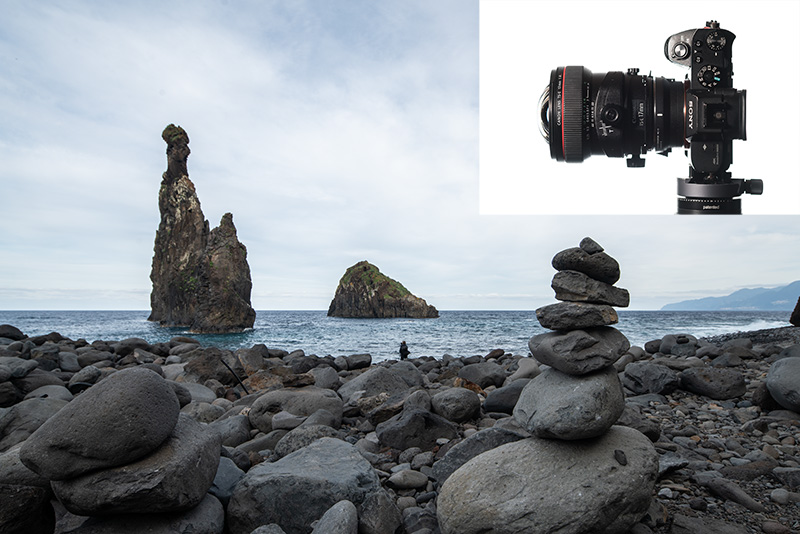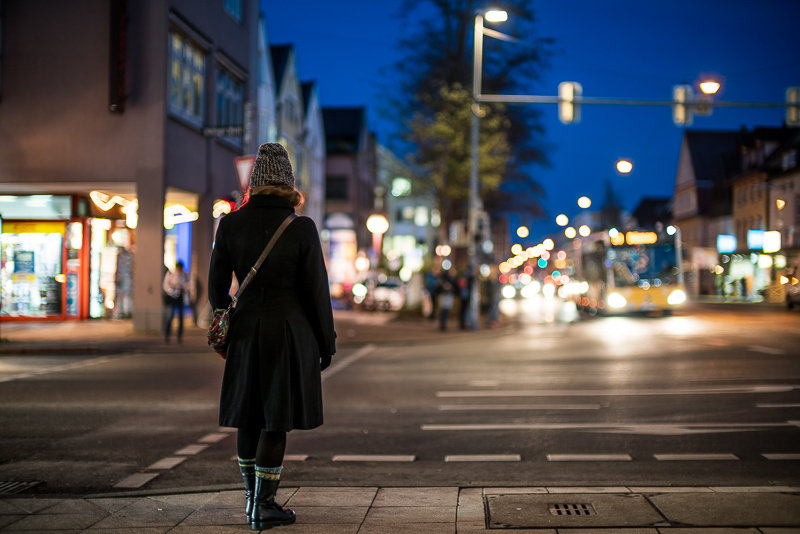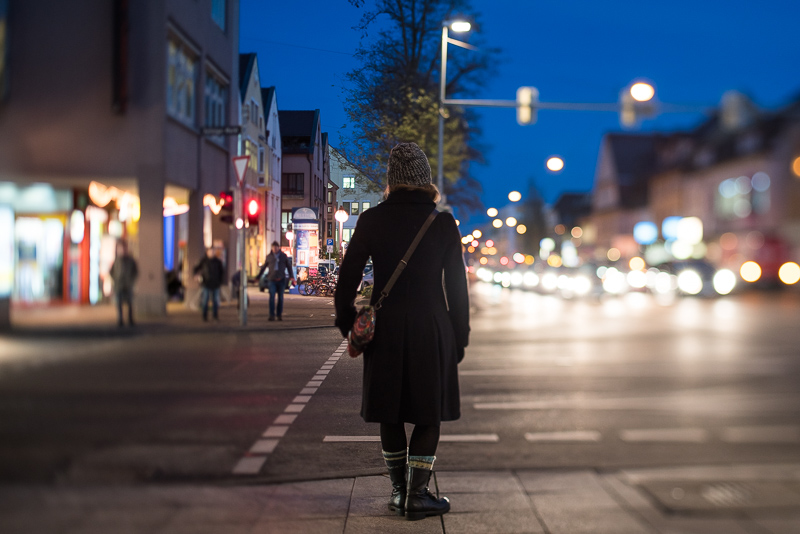Canon TS-E 17mm 4.0L via Sigma MC-11 on Sony A7rII
Tilt/Shift lenses are rather exotic, they are mostly used for architecture or table top photography, and with the wide availability of post processing (correcting converging vertical lines and focus stacking) you see them very rarely nowadays, even amongst professional photographers. In this article I will tell you what Tilt/Shift lenses are all about and what they can be used for.
Shift
How it works
In the analogue era we mostly had shift (without tilt) lenses from several manufacturers like Canon, Nikon, Olympus and Leica and mostly in the 28-35mm range. With film you couldn’t easily straighten verticals in post, so these were needed if you wanted to delve into more professional architecture shooting without having to deal with a medium or large format view camera.Shift lenses cover a larger image circle than necessary for 35mm (fullframe) format. With the Shift function you are moving your camera in this bigger image circle and by doing so the horizontal line can be moved from the center of the image to the desired position.
Sony A7rII | Canon TS-E 17mm 4.0L via Sigma MC-11 | f/11
This effect can nowadays be replicated by tilting the image in post. While many people think a shift lens will show less perspective distortion this is not the case. A shift lens or a tilted image in post will both show the same perspective distortion when taken from the same spot with the same focal length
Nevertheless there is a significant benefit of using a shift lens: you will still have information in the corners which otherwise is lost when tilting in post. So to get the same framing you need a wider non-shift lens compared to the shift lens.
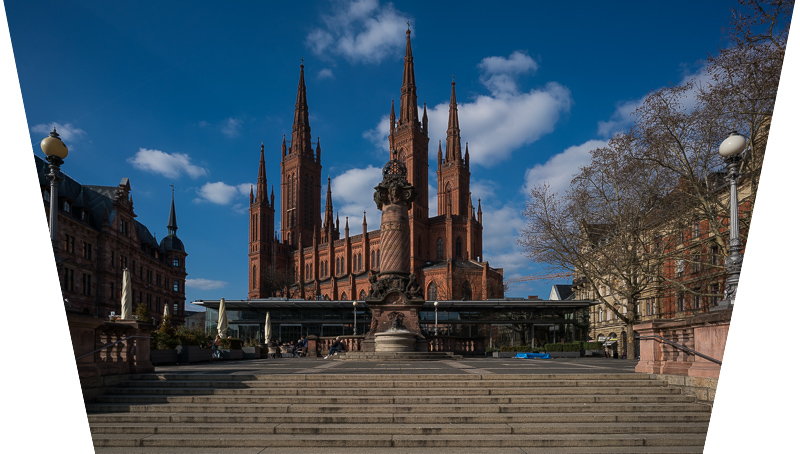
Sony A7rII | Zeiss Loxia 21mm 2.8 | f/8.0 | converging verticals corrected in post
To give an example: in case of the Canon TS-E 17mm 4.0L you need about a 10.8mm non-shift lens to fully replicate it (and you will end up with significantly less pixels as you have to crop some parts of the 10.8mm image).
Example 1: Correcting converging verticals

Sony A7rII | Canon TS-E 17mm 4.0L | shifted up
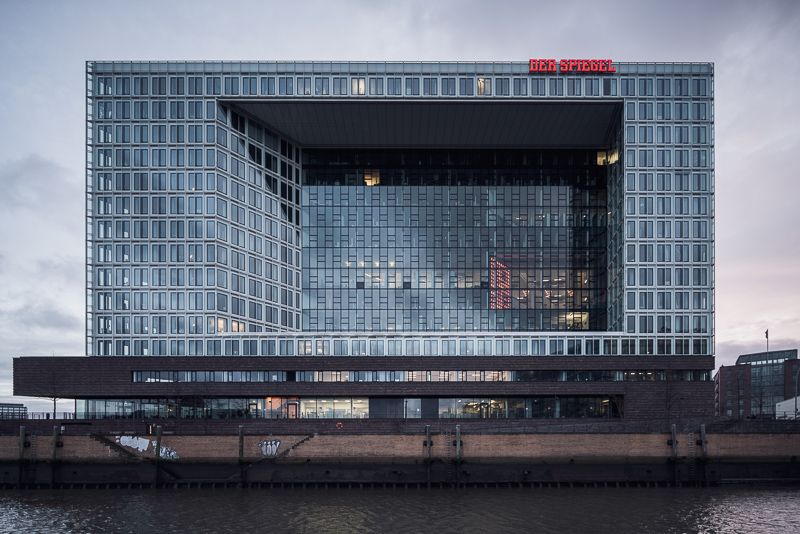
Sony A7rII | Canon TS-E 17mm 4.0L | shifted up
This is the application people will most likely associate with shift lenses and it probably does not need any further explanation.
Example 2: Shift Panorama
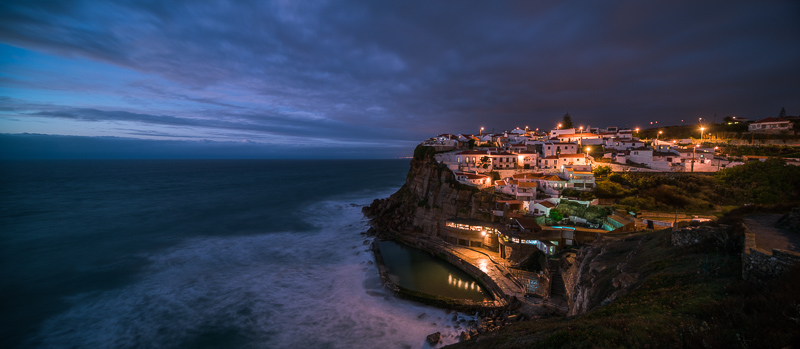
Sony A7rII | Laowa 12mm 2.8 Zero-D on Magic Shift Converter | landscape orientation horizontal shift pano
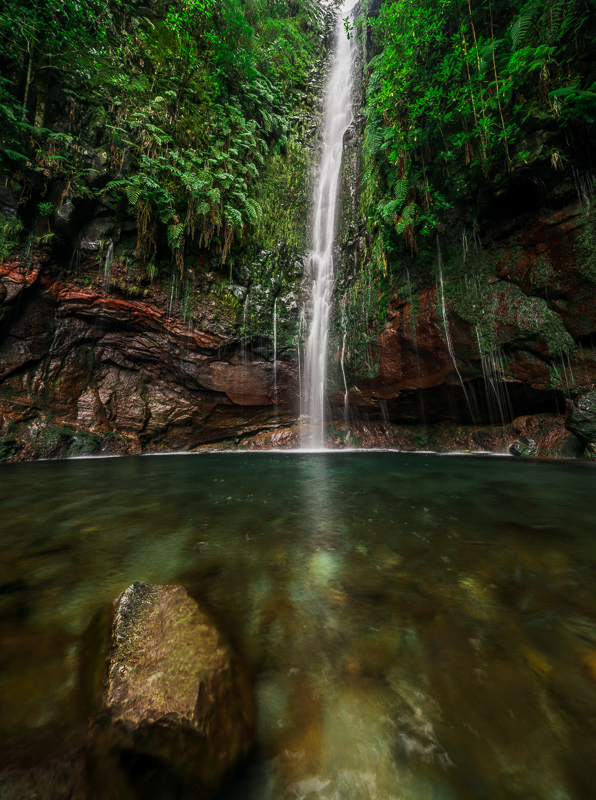
Sony A7rII | Canon TS-E 17mm 4.0L | f/11 | landscape orientation vertical shift pano
A “shift panorama” is a very simple panorama as you don’t need any accessories like a rotating plate and you won’t be running into stitching errors (for wider lenses you may need a rear shift adapter to completely eliminate stitching errors though).
When using a full frame camera you can easily realize a 48x36mm (4×3, 3 shots with 50% overlap) or 60x24mm (2.5×1, 2 shots with 33% overlap) framing which – compared to cropping an image from a wider lens – will give you an increased number of pixels and better image quality.
Example 3: Environmental Portraiture
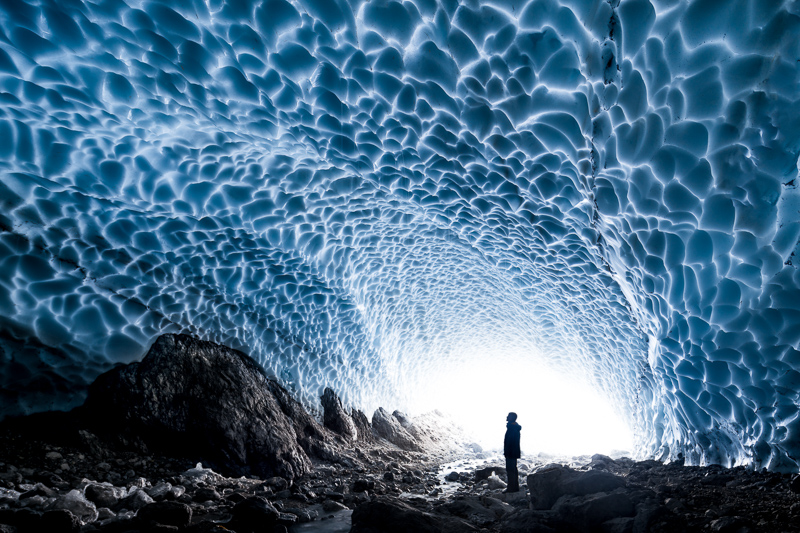
Sony A7rII | Canon TS-E 17mm 4.0L | shifted up
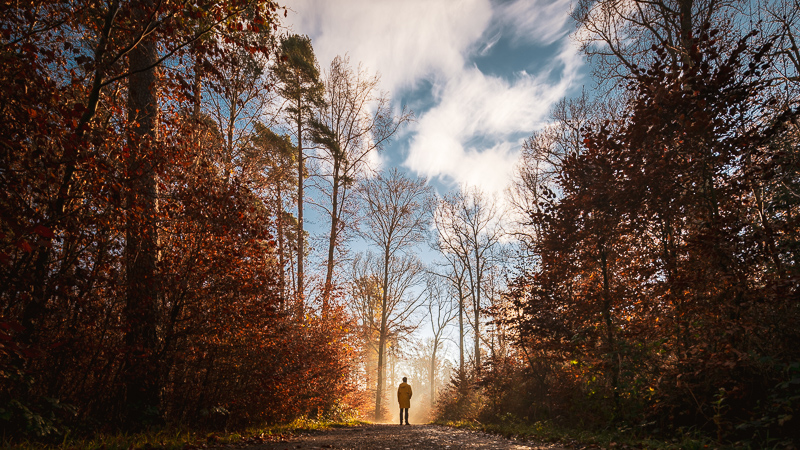
Sony A7rII | Canon TS-E 17mm 4.0L | f/4.0 | shifted up
Environmental portraiture is another application I personally like to use wide shift lenses for. With these kind of shots you usually want to have the person close to the edge of the frame and you also want to avoid converging verticals. To realise this when using a non-shift wide lens like a 17mm you will have to tilt the camera up when taking the shot to have the person at the bottom and later tilt the image down in post to correct for the converging verticals so you will end up with much less pixels and a very different framing.
This is much easier with a shift lens as you will have the correct framing from the start.
Tilt
How it works
Tilt is a bit harder to master then shift if you want to make full use of it. By tilting the front part of the lens you can modify the plane of sharpness. There is a very comprehensive and helpful discussion of tilt to be found here. So I will focus on additional topics and usage scenarios not covered there in detail yet.Example 1: Increasing depth of field
- no tilt: overview
- tilt: overview
- no tilt: foreground
- tilt: foreground
- no tilt: background
- tilt: background
This is the classic usage scenario for tilt in landscape, architecture or table top photography. By tilting the lens a bit you can extend the plane of things in focus. By doing so you may be able to get better image quality by using an aperture like f/11 in combination with a slight amount of tilt instead of stopping the lens down to f/22 and running into diffraction or avoid focus stacking.
In the field this is a bit fiddly, so maybe you want to get some help from this resource to make better use of it.

Sony A7III | AstrHori 50mm 1.4 Tilt | f/1.4 | tilted
Example 2: Miniature effect
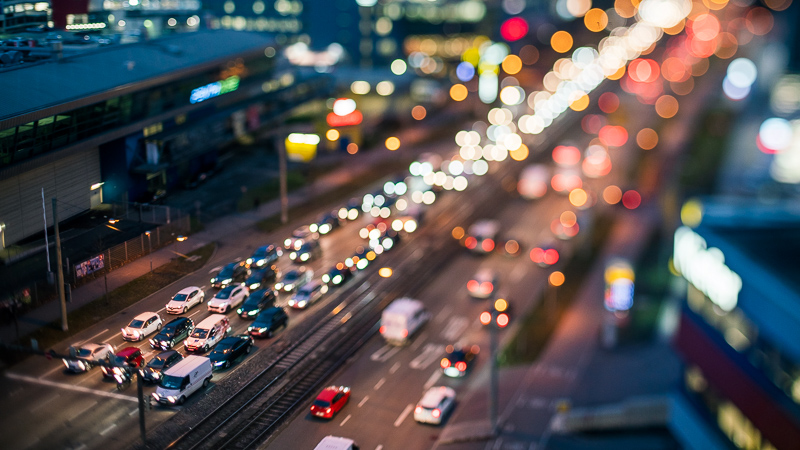
Sony A7rII | Canon TS-E 45mm 2.8 | f/2.8 | tilted diagonally
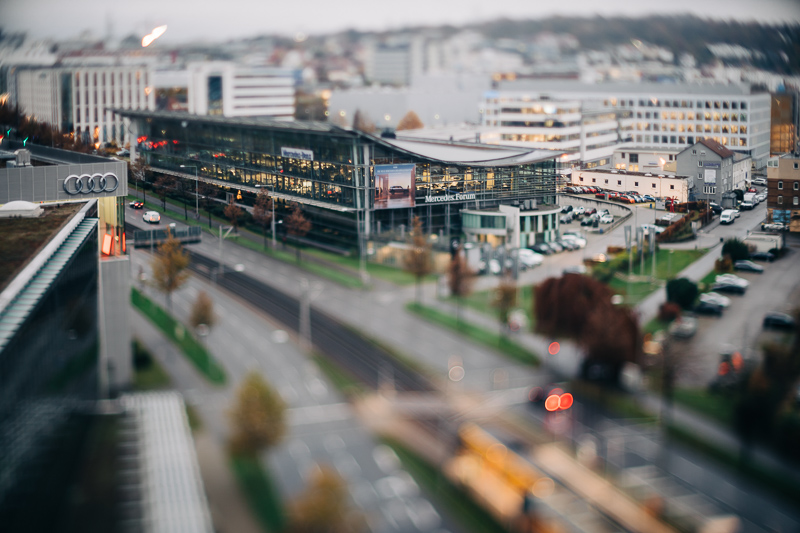
Sony A7III | TTArtisan 50mm 1.4 Tilt | f/1.4 | tilted
This gimmicky effect is what people usually associate with Tilt/Shift lenses. It’s the effect that many Lensbaby lenses give, and they cannot really be used for anything useful other than this.
This effect gets boring quite soon and I wouldn’t buy a Tilt/Shift lens just for that.
Example 3: Bokeh

Sony A7III | TTArtisan 50mm 1.4 Tilt | f/1.4 | tilted
Tilting the lens can be used for increased bokeh, but it takes quite some work to not look gimmicky or just plain wrong. First we need to understand that when we tilt the lens there will be a part in focus and then one half will show the backgroud bokeh and the other one the foreground bokeh.
Most lenses have quite different rendering of foreground and background bokeh. Personally I think the background bokeh is often significantly smoother and nicer.
You can use these lenses to get a higher amount of bokeh compared to much faster lenses, especially at longer distances:
To overcome this you can combine two shots (one tilted left and one tilted right) to have the nicer bokeh on both sides, which I did here:
This also works for buildings and other large objects which you cannot otherwise take a shot of with an out of focus background even when using the Brenizer/Bokehpanorama technique.
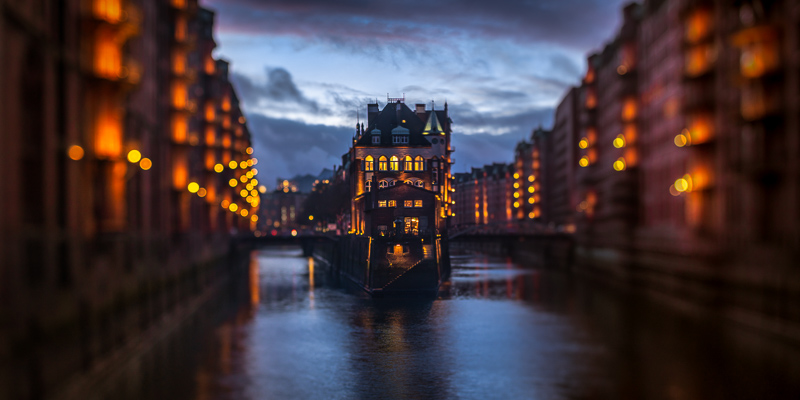
Sony A7rII | Canon TS-E 45mm 2.8 | f/2.8 | tilt left and right combined
Tilt/Shift lenses
As mentioned in the introduction there are not that many Tilt/Shift lenses availabe, so I will try to mention the notable ones in this section to give you an overview what focal lengths are available.Canon
FD Mount (Tilt and Shift in same direction or orthogonal):TS 35mm 2.8 SSC buy on ebay.com
EF Mount Series 1 (Tilt and Shift orthogonal or in same direction when modified):
TS-E 24mm 3.5L buy on ebay.com*
TS-E 45mm 2.8 buy on ebay.com*
TS-E 90mm 2.8 buy on ebay.com*
EF Mount Series 2 (Tilt and Shift in any combination):
TS-E 17mm 4.0L buy from ebay.com / amazon.com / B&H*
TS-E 24mm 3.5L II buy from ebay.com / amazon.com / B&H*
TS-E 50mm 2.8L Macro buy from ebay.com / amazon.com / B&H*
TS-E 90mm 2.8L Macro buy from ebay.com / amazon.com / B&H*
TS-E 135mm 4.0L Macro buy from ebay.com / amazon.com / B&H*
Canon offers the most complete selection of Tilt/Shift lenses and the current ones are the best you can get in terms of image quality. They also work very well when adapted to Sony cameras.
I recommend the Sigma MC-11 adapter though, as all these lenses are internal focus designs where the correct flange focal distance can have a big impact on the achievable image quality.
Nikon
Older:PC-Nikkor 35mm 3.5 buy on ebay.com*
PC-Nikkor 35mm 2.8 buy on ebay.com*
PC-Nikkor 28mm 4.0 buy on ebay.com*
PC-Nikkor 28mm 3.5 buy on ebay.com*
PC-Micro-Nikkor 85mm 2.8D buy on ebay.com*
Newer:
PC-Nikkor 19mm 4.0E ED N buy from ebay.com / amazon.com / B&H*
PC-E Nikkor 24mm 3.5D ED N buy from ebay.com / amazon.com / B&H*
PC-E Nikkor 45mm 2.8D ED N buy from ebay.com / amazon.com / B&H*
PC-E Micro-Nikkor 85mm 2.8D N buy from ebay.com / amazon.com / B&H*
Only on the 19mm 4.0 you can set any combination of tilt and shift. The other lenses can only do tilt and shift orthogonal to each other, all but the 85 of the old ones only shift. If you want to have tilt and shift on the same axis these lenses have to be modified by a service point as some internal parts need to be replaced. For the “E” lenses you also need the expensive Commlite adapter to control the aperture when using on an E-mount camera.
So for Sony users I recommend getting one of the equivalent Canon lenses instead.
Laowa
15mm 4.5 Shift buy from manufacturer’s homepage*17mm 4.0 (12mm 2.8 + Magic Shift Converter)
12mm 2.8 buy from manufacturer’s shop / ebay.com / amazon.com / B&H*
Magic Shift Converter buy from manufacturer’s shop / amazon.com / ebay.com / B&H*
20mm 4.0 Shift buy from manufacturer’s homepage*
The 15mm 4.5 is now the widest shift lens available, but it only allows for 11mm movement instead of the 12mm of the Canon TS-E 17mm 4.0L. Best have a look at my review of the 15mm 4.5 for further reference. The 12mm 2.8 in combination with the Magic Shift adapter “only” offers 10mm shift, but you have the benefit of being able to use it as a 12mm 2.8 for e.g. astrophotography.
Samyang
Samyang TS 24mm 3.5 ED AS UMC buy from ebay.com / amazon.com / B&H*Samyang also introduced a 24mm 3.5 Tilt/Shift lens for various mounts. I tried it once and the image quality was pretty bad and the mechanics weren’t really convincing either. I can not recommend this one.
AstrHori
AstrHori 18mm 8.0 Shift buy from ebay.com / ebay.de / amazon.de*On a fullframe camera this isn’t actually a shift lens as even with only 1-2 mm of shift movements the corners start becoming pitch black because of its too small image circle.
AstrHori 50mm 1.4 Tilt buy from amazon.com / amazon.de / ebay.com / ebay.de*
TTArtisan
TTArtisan 50mm 1.4 Tilt buy from official TTArtisan online shop / amazon.com / amazon.de / B&H / ebay.com / ebay.de*Olympus
Zuiko Shift 24mm 3.5 buy on ebay.com*Zuiko Shift 35mm 2.8 buy on ebay.com*
Being introduced in 1984 as far as I know the 24mm was the widest shift lens available until Canon caught up with their first 24mm 3.5 shift lens in 1991. David used the 35mm version a lot in the days of film, but says that the image quality is really quite poor by modern standards.
These are mostly collector’s items so their used prices do not necessarily reflect their actual value.
Leica
PC-Super-Angulon-R 28mm 2.8 buy on ebay.com*I think this shares the same optics as the older Schneider PC Super Angulon 28mm 2.8.
Hartblei
40mm 4.0 IF TS80mm 2.8 TS
120mm 4.0 TS Macro
As far as I know these are older rehoused Zeiss Hasselblad medium format lenses. They are very expensive and there is little information to be found online. I would rather get one of the newer Canon lenses.
Schneider
PC Super Angulon 28mm 2.8 (old) buy on ebay.com*PC TS Super Angulon 28mm 4.5
PC TS Super Angulon 50mm 2.8 buy from B&H*
Schneider has a modern PC TS Super Angulon series which I consider being too big and expensive considering the alternatives. There is also little information to be found online so there is nothing useful I can tell you about them.
Conclusion
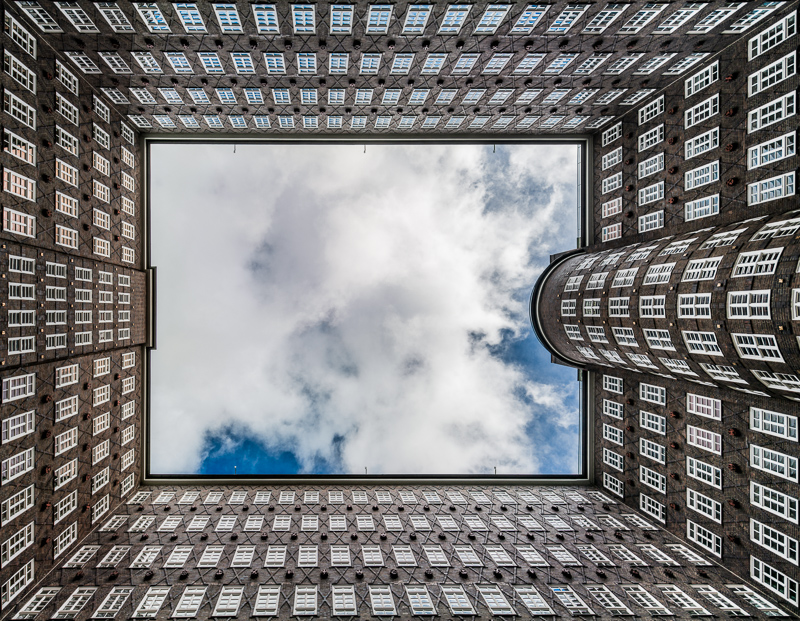
Sony A7rII | Canon TS-E 17mm 4.0L | f/8.0 | portrait orientation horizontal shift pano
There is still a place for Tilt/Shift lenses in modern photography, but they really are special purpose lenses for certain needs. If you need one I am pretty sure you already know it.
If you just want to try one out my advice is to get one of the older Canon 24mm 3.5 or 45mm 2.8 lenses, you will be able to sell them with little to no loss if you discover they are not for you. This will be cheaper than renting one and gives you more time to learn how to use it, which will be useful.
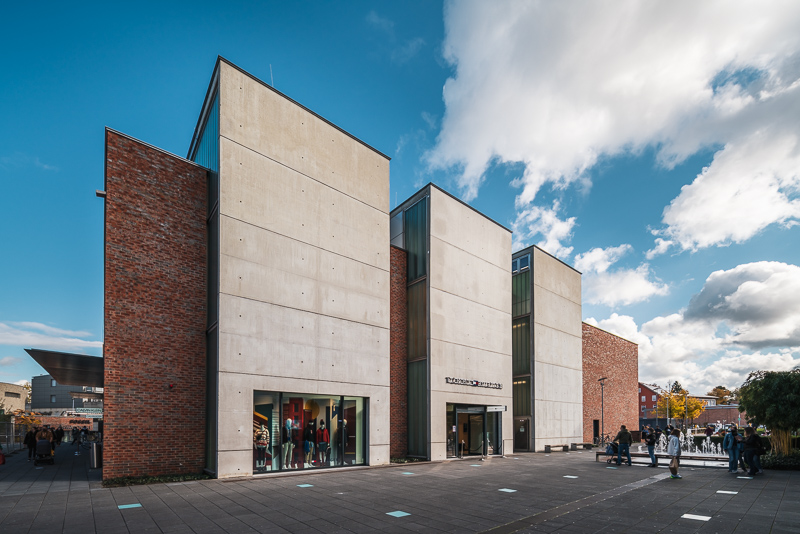
Sony A7rII | Laowa 15mm 4.5 Shift | f/11 | shifted up


